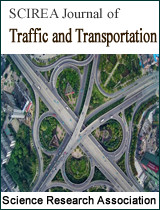Application of Artificial Intelligence of Generative Content (AIGC) in the Field of Urban Intelligent Traffic Management
DOI: 10.54647/tte580070 30 Downloads 14417 Views
Author(s)
Abstract
This article explores the integration and application of Artificial Intelligence of Generative Content (AIGC) technology in urban intelligent traffic management. Urban intelligent traffic management, through the utilization of advanced technological means, aims to achieve the intellectualization and high efficiency of the transportation system, characterized by informationization, automation, and networking. In China, the practice of intelligent traffic has achieved certain success. As a combination of artificial intelligence and big data, AIGC technology provides powerful technological support for intelligent traffic. AIGC can play a crucial role in intelligent traffic management. Through case study, it is demonstrated how AIGC enables and empowers intelligent traffic. However, it also faces challenges and opportunities related to data security, regulations, and policies. To address these issues, it is recommended to strengthen the research and development of AIGC technology, improve data security mechanisms, and formulate clear regulations and policies to guide its application in intelligent traffic management. Looking ahead, the deep integration of AIGC technology with urban intelligent traffic will drive continuous innovation and development in the transportation industry. This integration promises to further enhance the operational efficiency and management level of the transportation system, ultimately contributing to the sustainable urban development.
Keywords
Artificial Intelligence of Generative Content; AIGC; Intelligent Traffic; Traffic Management
Cite this paper
Xiaoyi Ren,
Application of Artificial Intelligence of Generative Content (AIGC) in the Field of Urban Intelligent Traffic Management
, SCIREA Journal of Traffic and Transportation.
Volume 6, Issue 1, February 2024 | PP. 23-42.
10.54647/tte580070
References
| [ 1 ] | Anthopoulos L , Fitsilis P .From Online to Ubiquitous Cities: The Technical Transformation of Virtual Communities[J].DBLP, 2009.DOI:10.1007/978-3-642-11631-5_33. |
| [ 2 ] | Drane C R , Rizos C .Positioning Systems in Intelligent Transportation Systems[M].IGI Global,1998. |
| [ 3 ] | Farooq U , Siddiqui M A , Gao L ,et al. Intelligent transportation systems: an impact analysis for Michigan[J].Journal of Advanced Transportation, 2012, 46(1):12-25.DOI:10.1002/atr.138. |
| [ 4 ] | Figueiredo L , Jesus I , Machado J A T ,et al. Towards the development of intelligent transportation systems[C]//Intelligent Transportation Systems. IEEE, 2001.DOI:10.1109/ITSC.2001.948835. |
| [ 5 ] | Goodfellow Ian, Pouget-Abadie Jean, Mirza Mehdi, et al. Generative adversarial networks[J]. Communications of the ACM, 2020.DOI:10.1007/978-3-030-50017-7_16. |
| [ 6 ] | Ho J , Jain A , Abbeel P .Denoising Diffusion Probabilistic Models[J]. 2020.DOI:10.48550/arXiv.2006.11239. |
| [ 7 ] | Prabhu S R B , Balakumar N , Antony A J .A Research on Smart Transportation Using Sensors and Embedded Systems[J].Social Science Electronic Publishing[2024-05-13].DOI:10.21276/ijircst.2017.5.1.5. |
| [ 8 ] | Radford A , Kim J W , Hallacy C ,et al. Learning Transferable Visual Models From Natural Language Supervision[J]. 2021.DOI:10.48550/arXiv.2103.00020. |
| [ 9 ] | Wright S , Steventon A .Intelligent Spaces — The Vision, the Opportunities, and the Barriers[J].Bt Technology Journal, 2004, 22(3):15-26.DOI:10.1023/B:BTTJ.0000047116.13540.e0. |
| [ 10 ] | Yovanof G S , Hazapis G N .An Architectural Framework and Enabling Wireless Technologies for Digital Cities & Intelligent Urban Environments[J].Wireless Personal Communications, 2009, 49(3):445-463.DOI:10.1007/s11277-009-9693-4. |
| [ 11 ] | Zhang J , Wang F Y , Wang K ,et al. Data-Driven Intelligent Transportation Systems: A Survey[J].IEEE TRANSACTIONS ON INTELLIGENT TRANSPORTATION SYSTEMS, 2011, 12(4):1624-1639.DOI:10.1109/TITS.2011.2158001. |

